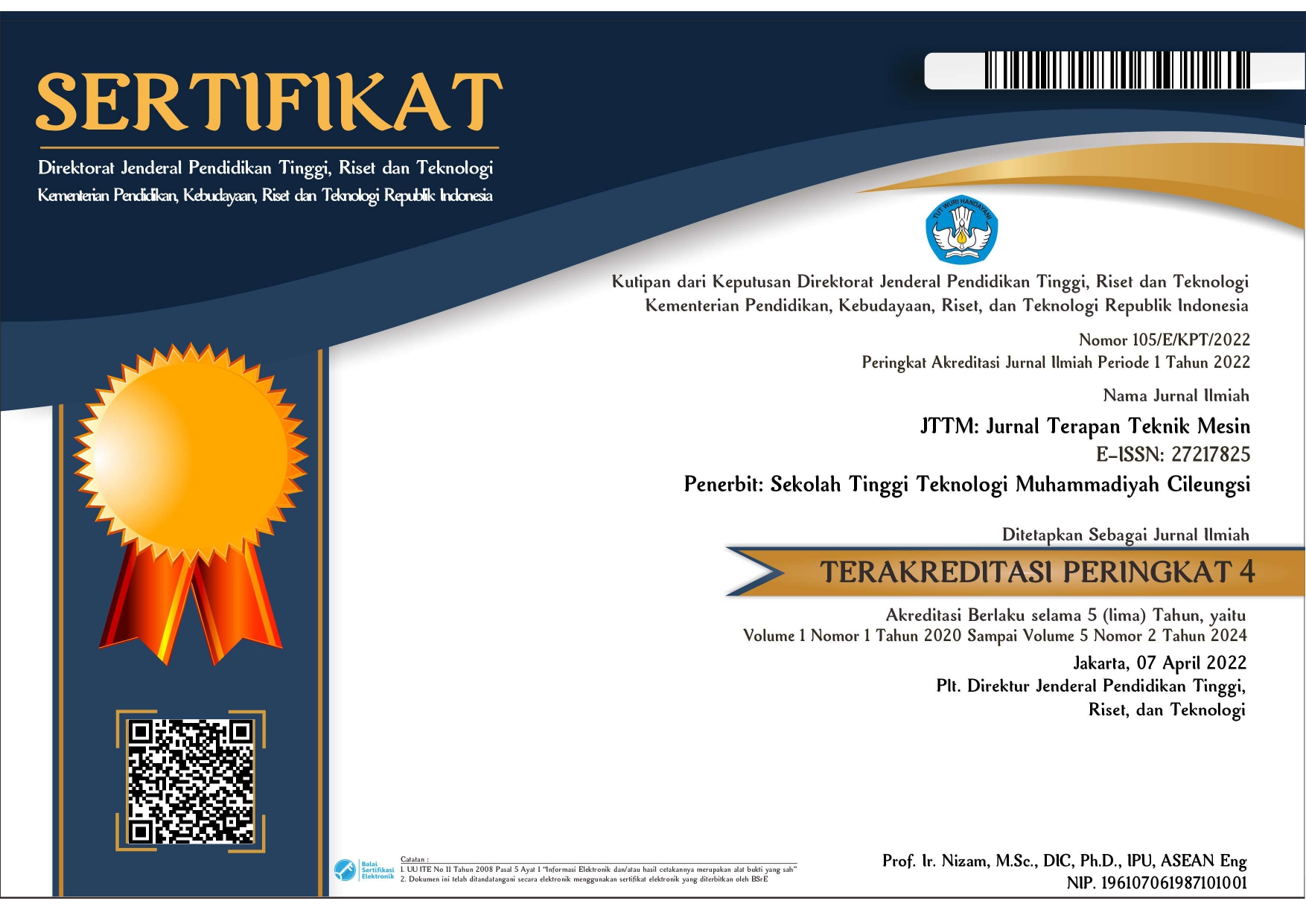Study on the effect of pitching on wave energy converter devices due to a spring constant of 980 N/M
Abstract
Having enough energy is crucial to living a healthy and fulfilling life. Energy is necessary for many of the actions and tasks that individuals carry out regularly. To increase national resilience and enhance the welfare of its citizens, Indonesia is thought to be a good place to use renewable energy through the development of its natural resources. The Wave Energy Converter is one of the energy producers (WEC). The Wave Energy Converter is a machine that uses the up-and-down motion of a chain through a pontoon to drive the rotation of a solenoid in a generator to produce electrical energy. The component that produces energy is the vertical movement of waves. Thus, the impact of the spring constant on ocean waves is examined in this work. Both planetary and non-planetary approaches were used in this study. Based on the research objectives and the experimental results on the pitching motion performance of the Wave Energy Converter machine, it can be concluded that the power without planetary gear in the analysis of potential energy and sea data identification is 0.43 Volts, and the highest is 4.2 Volts. The RPM range is 78.18 RPM at the minimum and 91.45 RPM at the maximum. 0.021 amps is the minimum and 0.043 amps is the maximum current value. The power range for planetary gear potential energy analysis and sea data identification is 58.5 volts to 168.36 volts. The RPM range is 78.18 RPM at the minimum and 91.45 RPM at the maximum. 1.93 amps is the least current value, and 14.01 amps is the maximum
Copyright (c) 2024 Dimas Suharto, Agung Dwi Prasetya, Muhamad Fadhil Faali, Abdul Hamid, Subekti Subekti

This work is licensed under a Creative Commons Attribution-NonCommercial 4.0 International License.











